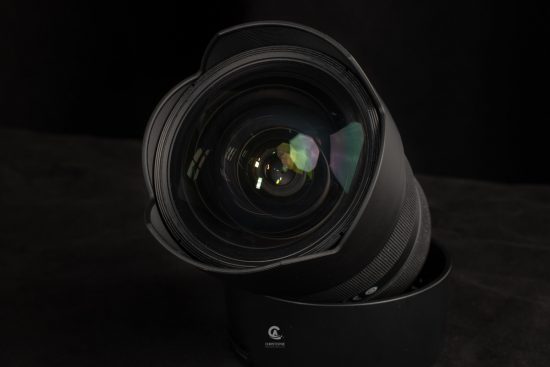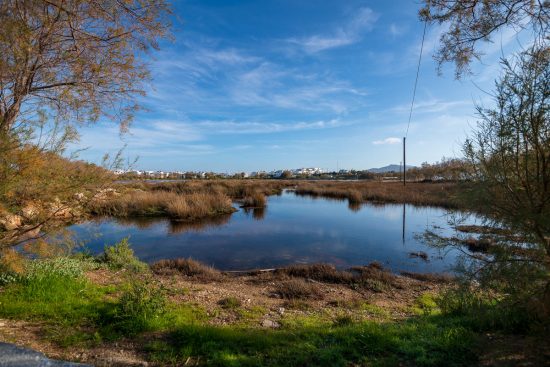Tokina Opera 16-28mm f/2.8 Review
This Tokina Opera 16-28mm f/2.8 ($699 at Adorama, B&H and Amazon) lens review is by Christophe Anagnostopoulos, Global Ambassador of Tokina & Hoya, (Website | Vimeo | Facebook | IMDB):
*Please note that at the time of writing this review, Adobe hasn’t released a lens profile for Tokina Opera 16-28mm F/2.8*
It is early March and along with the arrival of spring, the Milky Way season for 2019 just started and the timing couldn’t be better for the release of the new Tokina Opera 16-28mm lens, an ultra wide-angle Full Frame lens with a constant F/2.8 aperture over its entire focal length range.
Tokina had always a superb reputation among photographers not only for the exceptional build quality of its products but also for the magnificent wide angle lenses it produced, and the new Tokina Opera 16-28mm F/2.8 is continuing this tradition with its excellent performance and quality.
The new Tokina Opera 16-28mm F/2.8 is the second lens in the premium Opera series lineup for high-end DSLR users, following the first Opera 50mm F/1.4 lens which was released a few months ago, and this wide angle lens is coming at a very competitive price for Nikon F and Canon EF mounts.
Build Quality & Exterior Design
The lens is made in Japan and it’s built with the highest quality standards and materials. The new beautiful and modern looking matte black design, first introduced with Opera 50mm F/1.4 lens, provides partial weather sealing to protect the inside quality glass from moisture.
As expected from a high-quality lens, the mount is made of metal and it also has a rubber ring to prevent dust penetration.
For landscape photographers, dust penetration into elements can result in image quality loss so it is important to stay clean when for example the photographer change lenses. The rear element of Tokina Opera 16-28mm is moving in and out when it is zoomed, but the design doesn’t leave any gap in the rear for the dust to enter the lens optics.
The zoom ring is located near the base of the lens while the focus ring is near the front. Both rings have a very smooth feeling in operation. Tokina in the Opera series has matched the rotation direction of the focus ring according to the Nikon/Canon’s original ones to avoid confusion to the photographer.
The package includes a big lens cap, which protects the front element from scratches, and it attaches firmly onto the lens with two (2) clips on both sides, so you don’t have to worry if it drops accidentally.
In overall the lens gives you a solid feeling, that it can handle weather conditions with ease, while having a very premium appearance at the same time.
Lens Handling & Usage
The physical length of the lens remains constant although the inner lens tube moves a little, and to be more specific, at 16mm the front element is fully forward while at 28mm is retracted. The front element does not rotate, as the lens features an internal focusing mechanism, and it is protected well by the built-in petal shaped lens hood.
The wide coverage of 16-28mm makes this lens a perfect choice to be used on full-frame (FX) cameras, although it also provides a pretty good coverage on cropped sensors cameras (DX) as well, with an equivalent field of view of approximately 24-42mm.
However, due to its size and weight, the lens, in my opinion, is better balancing on pro DSLR bodies comparing on using this lens on smaller cameras which might not be very practical due to its dimensions and front-weight design.
The wide focal coverage on FX along with the constant F/2.8 bright aperture makes this lens very versatile and a great choice as it can be used on various photography genres very easily, such as astrophotography/timelapse, landscape, architectural and travel photography.
Autofocus
The lens features a new SD (silent drive) AF Module and is coupled with an also new GMR Magnetic AF Sensor, resulting in quick and silent focusing.
In case you want to focus manually, the lens features Tokina’s exclusive One-Touch Focus Clutch mechanism so the photographer simply pushes the focus ring backward in order to engage manual focus. When the focus ring is set in AF, rotating it has no effect so its not able to override focus setting.
In MF the focusing ring can be set beyond infinity mark, and from the tests I made so far the proper infinity point is set directly in the middle like shown below. Specifically for astrophotography this is very convenient in use, as even if the focus ring is accidentally moved, you can easily return it to the correct focus without having to check the live view.
Although for this type of lenses the autofocus speed is not so important, from my tests so far on the Nikon D850, the autofocus in its operation was fast while also reliable and accurate, although a small noise can be heard sometimes. According to the included manual, this is the sound of the ball bearings that are designed to smooth the movement of the focus ring. Of course this is not indicating a problem with the general functioning of the lens nor its too distracting in its use.
The Minimum Focusing Distance is just 0.28m, and getting so close to the subject in addition to the Angle of View of 107o can create some really interesting angles and compositions!
Optical Design
The lens features a complex optical design with 15 elements in 13 groups, including the newly created large Aspherical P-MO element and Super-Low Dispersion Glass Elements, which are eliminating chromatic and spherical distortions, as also reducing any ghosting and flaring. This design allows optimal resolution even with the aperture wide open, with very good color accuracy and high contrast.
Technical Specifications:
- Mount Type: Nikon F (also available for Canon EF)
- Focal Length Range: 16-28mm
- Compatible Format(s): FX,DX
- Maximum Aperture: f/2.8
- Minimum Aperture: f/22
- Angle of View (FX-format): 107.6–76.52
- Elements: 15
- Groups: 13
- Diaphragm Blades: 9
- SD Glass Elements: 3
- Aspherical Elements: 3
- FilterSize: N/A
- ImageStabilization: N/A
- Autofocus: Yes
- FocusMode: AF/MF
- Minimum Focus Distance: 0.28m
- Length: 133.5mm
- Diameter: 89.mm
- Weight(Approx.): 940g
Flaring
As a general rule we could say that when a lens design is more prone to flare (high number of elements, no coating, etc), will have as a result poor saturation in the produced images. This is the reason that the flaring behavior of an ultra wide-angle lens is very important because it will also have an impact in total contrast and color rendition.
Thanks to Tokina’s new coating technologies, the Opera 16-28mm F/2.8 performs very good when shooting against very bright sources of light. In the majority of the photos I took with the Sun in the frame for this review, there are some signs of flaring and ghosting when closing aperture starting from F/5.6, which for sure are not ruining the whole image and in some cases are easy to remove in post.
Color Rendering
Color rendering on Tokina Opera 16-28mm F/2.8 lens is excellent, as the lens delivers great natural colors with saturated blue skies. Color rendering is also bound to Contrast and the lens contrast performance is also very good, as it captures accurately the boundaries of areas with different luminance levels.

Nikon D850 – Opera 16-28mm @ 24mm – f/8, 1/320, ISO 64

Nikon D850 – Opera 16-28mm @ 16mm – f/8, 1/320, ISO 64
Sharpness
In terms of sharpness, the Tokina Opera 16-28mm F/2.8 performance is very good in overall.
The lens delivers very good results in the center at f/2.8 and it’s decent in the corners as it is a little soft, but from f/4 sharpness in corners improves drastically and it reaches its optimal performance at f/8.
Chromatic Aberration
Chromatic aberrations, or fringing, are those green and purple color halos around areas of difficult (high) contrast transitions.
In the case of Tokina Opera 16-28mm Chromatic aberrations are well controlled in general, with the lens having around 2 pixels or less of CA at all focal lengths and apertures, which can be easily removed in post without issues like shown below.

Nikon D850 – Opera 16-28mm @ 16mm – f/4.5, 1/125, ISO 64

100% Crop – Original, unedited image

100% Crop – Edited image, chromatic aberration removed
Please note that even though at the time of writing this review there wasn’t a lens profile for Adobe Camera Raw/Lightroom, the software removed 100% the small fringing with a simple click as shown below.
Comatic Aberration (Coma)
Coma is an optical aberration that afflicts off-axis light and it is caused by the curvature of the principal planes of the optical system.
Coma becomes apparent when the light rays from the source enter the lens at an indirect angle causing the image to be off axis.
The result is a comatic spot in shape, having a bright central core with a triangular flare extending toward the optical axis of the lens.
In Tokina Opera 16-28mm F/2.8 lens it can be seen in minor values near the edges of the frame when wide open at f/2.8, and it renders invisible from f/4.

Milky Way Galaxy Core over Antiparos Island (with high humidity)
Nikon D850 – Opera 16-28mm @ 16mm – f/2.8, 30sec, ISO 4000, Slik ECH-630 Star Tracker
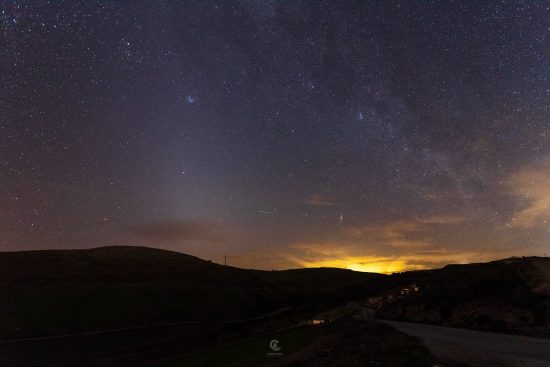
Zodiacal Light and Andromeda Galaxy (M31) after the rain
Nikon D850 – Opera 16-28mm @ 16mm – f/2.8, 10sec, ISO 6400
Vignetting
There is a moderate amount of light fall-off towards the borders at F/2.8 which can be corrected on post.
Stopping down reduces the amount of vignetting, and from f/4 isn’t visible. Still for most subjects this is not an issue, however as already said, it can be easily fixed in Photoshop/Lightroom.




Light Fall-Off from F/2.8 to F/5
Bokeh
The lens has a nine (9) blades aperture and in theory can create a good looking bokeh, but due to their nature, these type of lenses are not meant to be used for subject isolation, except if you get very close to your subject. So bokeh is rarely visible, still when it does, it is round and good looking.
Distortion
The rectilinear design is eliminating barrel distortion so the lens is distortion free and lines are appearing straight. Still, keep in mind to consider the perspective distortion that may occur with ultra wide angle lenses.
Conclusion
In overall, a very good all-around ultra wide angle lens for full frame cameras, bright enough with its constant F/2.8 aperture to be used on low light photography, a very usable focal range for use on various photography genres and with very good optical performance even wide open. Most importantly, at a very competitive price.

More Images with Tokina Opera 16-28mm F/2.8:



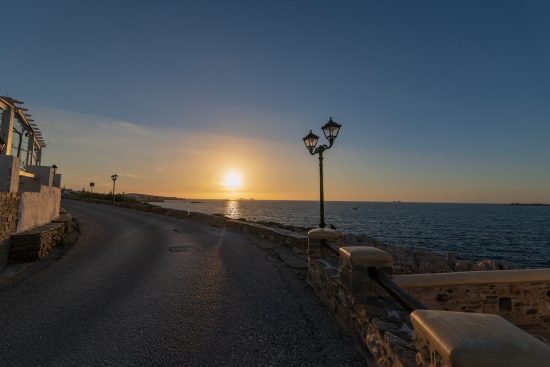

Christophe Anagnostopoulos, Global Ambassador of Tokina & Hoya, is an international award-winning filmmaker and professional time-lapse photographer, based in Greece.
- Website: www.christopheanagno.com
- Vimeo: vimeo.com/christopheanagno
- Facebook: https://www.facebook.com/christophe.anagnostopoulos
- IMDB : https://www.imdb.com/name/nm9542541/
The Tokina Opera 16-28mm f/2.8 lens is priced at $699, check availability at Adorama, B&H and Amazon
